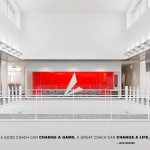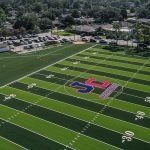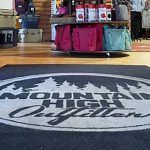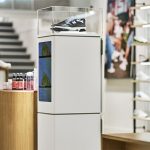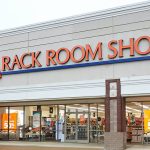Alan Yiu and Gabriel Cote, both 29-years-old, started Westcomb nearly three years ago in 2004. They wanted to build a company that catered to the core customer. In addition, Yius passion for good-looking clothes made starting Westcomb a natural progression for their careers.
Having studied design in college, interning in the L.A. fashion industry, and working in technical apparel production factories in B.C., Yiu is described by his co-workers as a designer who knows how to sew and put all the pieces together. Like an architect with hands-on contractor experience, he has real-world knowledge of how production works and what designs are realistic.
Yiu refers to Westcombs design approach as “True Form:” building technical, yet uncomplicated product that is clean and sophisticated, technical and fashionable.
Yiu works closely with their suppliers to find out what fabrics and technologies are new, leveraging his production background to determine the best ways to put those new fabrics to use.
|
BOSS: |
What made you
decide to start a technical outerwear company when there are already so
many big, well-funded brands in the market? |
|
AY: |
There were a number of reasons. The first one, I think,
was that it was a natural career move for me. Id been working in
production for four years and then I decided to go to fashion school in
Las Angeles, and when I finally came back someone had taken my position
in production and I worked in product development.
After a while I decided I wanted to take the next step in
my career. This coincided with a time in the industry when a lot of the
core brands were being merged under large conglomerates and they were
really becoming more main-stream. I just thought, for personal reasons,
that a lot of the brands I used to wear and trust just werent the same
anymore. Finally, I thought that I just wanted to make clothes that I
really wanted to wear.
One area that I thought needed to be improved on, was
that there are a lot of people who like the “outdoor lifestyle,” but
there was a lack of versatility in the apparel designed for the core
user. I thought that was one place Westcomb could address a need
versatility and the ability to wear the gear n the mountain and off the
mountain. Bear in mind, that today there are a lot of brands trying to
achieve that, but when we first started there werent that many. |
|
BOSS: |
With so many
brands trying to achieve this versatility today, what really sets
Westcomb apart? |
|
AY: |
When we started, we really noticed that a lot of the top
brands were, I dont want to say compromising, but they werent using
the fabric technology that was available to them. So, I guess theres no
way around it, they were compromising their technology. So, we made a
point of partnering with the top materials innovators to make sure our
fabrics really
perform. That adds value. We are not trying to create a cheaper product.
We are trying to create a highly technical product.
We also mix branded technologies in our products. Of
course, the suppliers always say, why dont you use 100% of our
fabric, but we try to design our products so that they use the right
technology in the right places. Sometimes it hasnt been done the way we
do it, but I think it is always a win-win for all of us, the suppliers,
Westcomb, and the consumers. It tells our customers that we are not
compromising anything. Were not trying to add a couple of margin
percentage points by using only one fabric.
But having the suppliers we do use really support
Westcomb has been a huge part of our success as well. If we didnt have
the backing of the suppliers to do what we want, none of this would have
worked
Also, being different and taking risks, we have to do
that all of the time, because right now there are a lot of people
asking, what are you all about? If we cant answer that then we cant
win them over. |
|
BOSS: |
Whats youre
distribution strategy? |
|
AY: |
We really have a controlled distribution strategy. We
focus strictly on what I like to call boutique outdoor stores as opposed
to larger big-box chains. Its just such an experience to buy at a
boutique store, and they are so much more knowledgeable about the latest
technology
People ask me, “Why would you forego sales over image?”
Well, once your image is gone, thats it. |
|
BOSS: |
Can That Support
Future growth? |
|
AY: |
I need to re-iterate that we dont want to be
main-stream, and thats another challenge for us. Its cool to be
grassroots, right? But there is only so much you can do when your
business is this size. We are at that sweet spot where we are the
grassroots brand before it becomes main-stream, and we want to stay
there. We want to be in the boutique specialty stores that sell the
experience and know the technology they are selling. |
|
BOSS: |
Are you looking
primarily at North America, or do you have any goals in Asia or Europe? |
|
AY: |
When I first started in 2004, by a stroke of luck and
some connections, we managed to open up our markets in Japan and Korea
at the same time we launched in Canada. So, that was really good for us.
At the last OR, we opened up Taiwan, and added two new reps in the U.S.
So, that gave us a good presence to sell in the U.S., Canada, and Asia.
This year, we won the ispo BrandNew award, and now our key suppliers
eVent and Malden, are helping us establish relationships with key
vendors in the European community.
For us, I wouldnt be going there unless we were solid in
our back yard, but with this opportunity… I mean they gave us a free
booth and all we have to pay for is the plane ticket, so I am going
there for the experience, to learn something, and hopefully make some
contacts for down the road. |
|
BOSS: |
What were some of
the main challenges in starting a new technical apparel brand?
|
|
AY: |
Primarily, it was about getting our philosophy out to
consumers and creating brand awareness. A lot of consumers still dont
know who we are and what we do, but we are working on changing that. To
the discerning user who really appreciates quality and value, reaching
out to them is a slow process, but once you do, you really see the
results.
Another major challenge that is out there for new brands
is production. That is fully half of the challenge of starting up. In
order for me to partner with a facility that can bring my concepts into
a physical product, its really tough. Being able to do that at such a
high standard of quality, its almost unheard of for a new brand, simply
because the volume is not there.
Being able to convince the retail buyers that this
product is not just half assed and that we really emphasize quality is
also a challenge – even just showing them samples. For buyers,
convincing them to take on a new brand means they need to forego some
open to buy dollars from another brand, which is probably already
selling for them. |
|
BOSS: |
What are your
end-goals for the brand? |
|
AY: |
Its really hard for me to put a number on it,
because we are just not to that point yet, but I think that if we have a
boutique outdoor retailer carrying Westcomb in every major city of the
country, I would be happy. Basically having a presence in every city
without going into big-box. |

